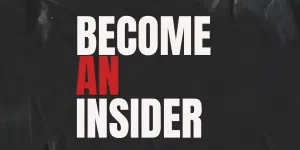We’re in something of a golden age for horror games. Of course, you have your huge blockbusters in the form of Resident Evil Village, but some of the most interesting horrors are happening in the indie scene, and some of the best stuff is big on ideas, but lighter on current-gen shine. In recent years, we’ve seen a number of games that – if you aren’t looking close enough – you might assume were a PS1 game with their low-poly aesthetics. To better understand why there’s been a resurgence in the PS1 horror game, we spoke with Jessica Harvey (Paratopic), GERMFOOD (NIGHT OF THE CONSUMERS), and Aaron Taecker-Wyss (THE DEVIL).
If you’re a fan of horror games, there’s a non-zero chance that you’ve at least played a Silent Hill game. It’s undoubtedly one of the most iconic horror series out there, known for its mysterious lore and fog-covered towns. But the fog wasn’t originally planned to be a part of the game; it secretly acts as a coverup for the PS1’s inability to render a further draw distance. That’s one of the most interesting aspects of titles released on older hardware.
“’PS1 aesthetic’ only exists because of the hardware limitations at the time, but now we are intentionally trying to make games look this way,” says GERMFOOD. “Since we don’t have any of those limitations, we are free to expand on it. Some developers want to replicate the aesthetic as accurately as possible which is cool, but there’s nothing stopping us from throwing in some new stuff too!”
GERMFOOD’s own NIGHT OF THE CONSUMERS is a great example of how developers can expand upon aesthetic choices in ways that weren’t possible on earlier hardware. The game acts as a parody of the experience of working a retail job, having you move boxes around from aisle to aisle, restocking shelves, all the while avoiding zombie-like customers that are – of course – out to get you. It’s a familiar feeling to anyone that’s worked retail.
There’s a sort of haze across the store, so you can’t see all the way through it. It inhibits your view, exposes you, makes you feel more vulnerable. It’s unsettling, but purposefully so, because GERMFOOD didn’t have those same limitations PS1 developers did some 20 years ago.
And thanks to the freedom of modernity, the game is fluid and fast-paced, and it doesn’t take an age just to turn around. It doesn’t necessarily recreate the experience of playing a PS1 game, but emulates the idea of it.
For Jessica Harvey and the rest of the team at Arbitrary Metric, the idea of PS1 aesthetic was something more specific than that, though. “To be honest, I never had a PS1 growing up, and the console, in particular, wasn’t really a point of consideration when developing the game.”
So why does her team’s game, Paratopic, opt for that low-poly aesthetic, then? “If we were to point at individual games, I looked at coarser, more leftfield early attempts at rendering full 3D environments such as Terminator: Future Shock, or Psygnosis’ Sentient. But more specifically, it was less “PS1” or “3DFX chips” that we wanted to evoke, and more the hauntology of the past.”

Harvey describes the world of Paratopic as one that is “desolate, wrong space,” a description that fits many horror titles. One of the most uncomfortable feelings I think you can experience is a feeling of displacement – something that isn’t quite right – and I think that’s something a low-poly aesthetic can capture quite excellently. Harvey goes on to say, talking about games from the 90s when 3D was still being figured out, that “the fabric of the games of this era compared to how things have consolidated in more recent years, is unfamiliar and wrong.”
In the halcyon days of the PS1 era, 3D graphics and the implementation of 3D space in games were still being unraveled. It was, as Harvey describes it, “embryonic 3D”, but I think a large contributor to this is the feeling of unfamiliarity a younger audience might have towards the genre. There are aspects of a PS1 game that might feel off to someone not used to them, in a way that you can’t always articulate. Things have changed since then, and PS1 games – to this day – all carry a very particular feeling.
“I would generally chalk it up to uncanniness, mostly as a result of visual distortion. 3D graphics on PS1 have a bunch of different forms of visual distortion,” says Aaron Taecker-Wyss, who then goes on to list examples such as 240p screen resolution, severe aliasing, and unfiltered textures.
“All of these things mean that the visuals are warped and distorted in subtle ways which give the visuals a surreal, possibly-eerie quality. It’s sort of like watching a movie on a dirty projector; the grit and distortion are much creepier compared to watching the same movie in 1080p on an LCD TV.”

Taecker-Wyss is right: it’s not just about the specificity of the low-poly look that can be so off-putting, but everything that comes with it too. The fuzz of a crappy CRT will obstruct your vision in a way that a crisp 4K television never could. It’s almost impossible to fully recreate that experience for a modern audience, considering CRTs are almost something of a collector’s item, so why are we seeing this aesthetic coming back?
For Taecker-Wyss, it’s about breaking conventions, saying that there’s an increased license to break design rules that come with retro horror.
“Most modern games right now feel boxed-in by design convention. Everything has a ‘correct way’ to do it, which I find very boring and tiresome. When your game is ‘retro’, players give you a lot more license to break modern conventions.”
Taecker-Wyss isn’t wrong. Often big AAA releases are the same game with a different skin, not being brave enough to break the mold and try something new. But when you present a game that seems old, the player gets the impression it is old, and can forgive mechanics that might seem unconventional.
I think these low-poly games are also growing in popularity simply because the people who grew up with them are making games now, and that’s something that GERMFOOD notes as well. Interestingly, both GERMFOOD and Taecker-Wyss also made a point of how accessible the look is – another reason indie developers are attracted to this insidiously unsettling aesthetic.
“Seven years ago, it took a lot of work and technical knowledge to make your preferred engine (eg, Unity, Unreal) look like an authentic PS1 game. Today, there are many free, open-source shaders that mimic the PSX’s visual limitations, so you don’t need any advanced knowledge to pull it off,” says Taecker-Wyss.
In the end, though, horror games are about crafting complicated feelings – no matter what route you take to get there. Horror is a genre that is frequently not recognised by questionably “prestigious” awards: there have only been six horror films nominated for best picture in the entirety of The Oscar’s history, with the only winner being Silence of the Lambs. It’s the same in the literary world, where horror is oh-so-often maligned as ‘genre’ fiction and not taken as seriously its more traditional genre siblings.
Yet horror is a genre that pushes boundaries, and questions the world as we know it. For Harvey, the reasoning behind why the PS1 horror game is coming back ties into that: “We’re reaching maturity in a world where the promises and optimism of the 90s were scorned. Not only did they never come to light, but those points of optimism (particularly with tech) have been rendered down into empty calories and forced into our beings by omnipresent corporations. We breathe a toxic air, and it stings us. The what-could-have-been of that time carries a lot of weight.”
If you’re looking for something interesting to play this Halloween, why not step away from the big-budget horrors and try something from the low poly scene? You might find something altogether stranger. A true halloween miracle.
Oisin Kuhnke is a freelance journalist and regular contributor to NME.
The post The resurgence of the PS1 horror game appeared first on NME.






